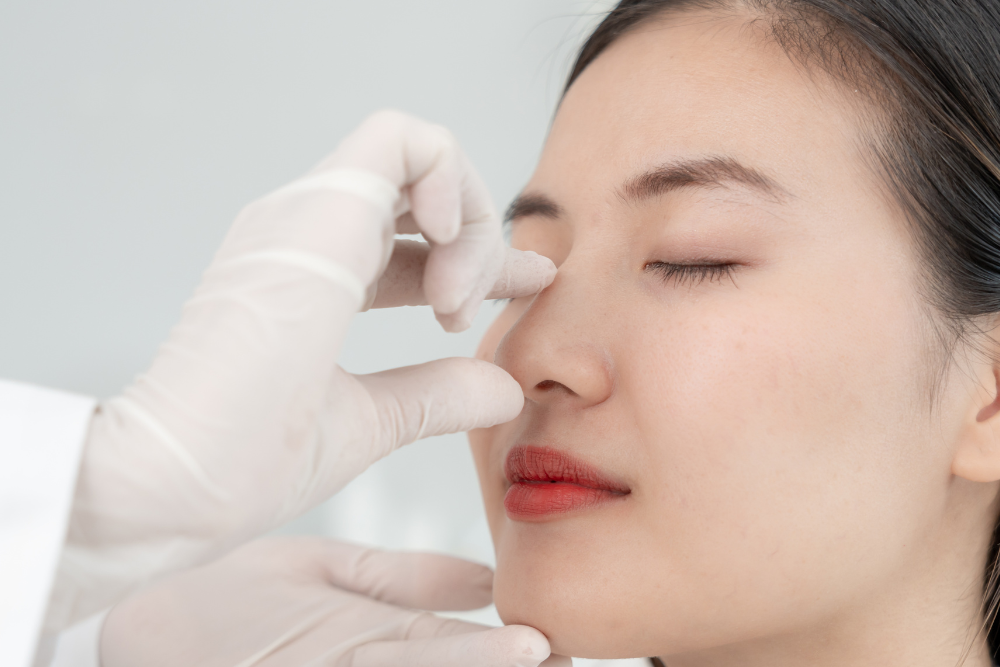





Delivering Excellence in Facial Plastic Surgery
Precision. Passion. Perfection
Safe, Artful Transformations for Your Face
Comprehensive ENT Care for Kids and Adults.
Your Family's ENT Care, Fully Addressed
Rhinoplasty: Enhancing Nasal Aesthetics
and Function.
A COMPREHENSIVE GUIDE TO SALIVARY GLAND TUMOURS IN SINGAPORE
UNDERSTANDING SALIVARY GLAND TUMOURS
Dr Sandeep and his team are committed to raising awareness and providing actionable guidance for individuals experiencing concerns with salivary gland lumps.

WHAT ARE THE DIFFERENT KINDS OF SALIVARY GLAND TUMOURS?

Salivary gland tumours fall into two main categories: benign (non-cancerous) and malignant (cancerous).
Among the benign types, the most common include Pleomorphic adenoma (also known as benign mixed tumour), Warthin’s tumour (also referred to as papillary cystadenoma lymphomatosum), and Oncocytoma.
On the other hand, malignant tumours, which are cancerous and potentially more serious, encompass a range of types such as Mucoepidermoid carcinoma, Adenoid cystic carcinoma, Acinic cell carcinoma, Polymorphous low-grade adenocarcinoma, Carcinoma ex pleomorphic adenoma, Salivary duct carcinoma, and Epithelial-myoepithelial carcinoma. Each type has its own characteristics and implications for treatment and prognosis.
HOW DO SALIVARY GLAND TUMOURS PRESENT?
Salivary gland tumours often present with various signs and symptoms, which can include:
A LUMP OR SWELLING
On or near the jaw, neck, or in the mouth that may or may not be painful.
NUMBNESS
In part of the face.
MUSCLE WEAKNESS
On one side of the face.
PERSISTENT PAIN
In the area of the salivary glands.
DIFFICULTY SWALLOWING OR OPENING THE MOUTH WIDELY
Usually indicative of a malignant process.
CHANGES IN THE SKIN
Overlying the salivary glands, such as redness or swelling.
UNEXPLAINED WEIGHT LOSS
Usually indicative of a malignant process.
It is important to note that these symptoms are not exclusively indicative of a salivary gland tumour and can be associated with other medical conditions. However, if someone experiences any of these symptoms persistently, they should consult a healthcare professional for a thorough evaluation.
THE IMPORTANCE OF PROMPT ACTION
Early detection is key in managing these conditions effectively.
PROMPT AND ACCURATE DIAGNOSIS
With causes ranging from benign to serious, early professional evaluation by specialists like Dr Sandeep is crucial. Thorough clinical examination and prompt investigations like CT or MR scan and biopsy help to establish the correct diagnosis.
CUSTOMIZED TREATMENT APPROACHES
Accurate diagnosis leads to more effective, individualized treatment plans and surgery. Dr Sandeep and his team will discuss the most suitable treatment plan for your condition in detail.
ATTAIN SUPERIOR RESULTS FOR SALIVARY GLAND LUMPS WITH DR SANDEEP UPPAL'S EXPERTISE IN FACIAL PLASTIC SURGERY
Managing salivary gland lumps in Singapore effectively requires a delicate balance between ensuring health and preserving facial beauty. Dr Sandeep Uppal of The ENT Clinic is adept in facelift surgery, offering an exceptional advantage in treating these lumps. His skilled approach minimizes scars and maintains your natural appearance.
With Dr Sandeep, patients receive comprehensive care that marries medical precision with cosmetic artistry. Dr Sandeep’s mastery in facelift surgery means even essential incisions are carefully placed to promote healing and protect your aesthetic integrity.
Contact Dr Sandeep to discuss salivary gland lump treatment that prioritizes minimal scarring. Book your appointment now for exceptional medical and aesthetic care.
Explore our other treatments:
Snoring and Obstructive Sleep Apnoea, Allergy and Sinus Infections, Nasal Obstruction, Nose Bleeds, Ear Wax, Ear Infection, Tinnitus, Hearing Loss, Dizziness and Balance Problems, Tonsil and Adenoid Issues, Thyroid Nodules, Salivary Gland Tumours, Voice and Swallowing Disorders.


